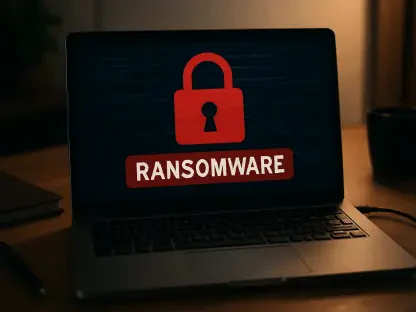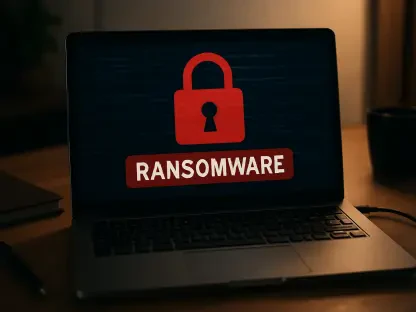New York’s cybersecurity regulations, encapsulated in 23 NYCRR Part 500 and enforced by the New York Department of Financial Services (NYDFS), have ushered in a new era of safety standards for finance firms. These regulations underscore a crucial shift toward heightened cybersecurity protocols designed to protect the financial sector from escalating cyber threats. The initiatives outlined in these regulations reflect a robust framework constructed to enhance defenses against the persistent threat of cybercriminals targeting financial institutions.
Understanding the Regulation
Evolution of Cybersecurity Mandates
Since its inception, the cybersecurity regulation 23 NYCRR Part 500 has exemplified a rigorous approach to strengthening cybersecurity protocols among finance firms in New York. This measure was not merely a compliance requirement but a strategic move toward ensuring a resilient cyber-defense posture within one of the world’s foremost financial markets. As the regulation nears the final stages of rollout, it highlights an enduring commitment to amplifying cybersecurity hygiene across financial entities. The eight-year timeline leading to the comprehensive adoption of these mandates reflects a well-paced evolution in addressing myriad vulnerabilities faced by financial sectors due to technological advancements and increasingly sophisticated cyber threats.
Stakeholders and firms have witnessed a transformative period under this regulation, transitioning toward enhanced cybersecurity awareness and implementation. Integral components of the regulation include mandates like reporting significant cybersecurity events, conducting thorough annual cybersecurity audits, and instilling regular cybersecurity awareness training across organizations. These initiatives are not merely checkboxes on a compliance list but foundational elements crucial for building a fortifying cybersecurity framework capable of withstanding modern-day cyber adversities. Through constant revisions and updates, these regulations ensure that financial institutions remain agile and prepared to tackle current and future cyber challenges.
Specific Requirements and Mandates
The specific mandates of 23 NYCRR Part 500 define a comprehensive roadmap that financial firms must follow to align with contemporary cybersecurity standards. Reporting potentially damaging cybersecurity events is paramount, as timely intelligence sharing helps in mitigating widespread risks across the financial ecosystem. These standards also mandate annual cybersecurity audits, allowing firms to critically assess their defenses and improve where necessary. Furthermore, employee training is prioritized, fostering a cybersecurity-conscious work culture, crucial in preempting and identifying potential threats. Engaging in regular penetration testing is also required, providing an avenue to identify vulnerabilities and fortify systems against malicious exploits.
Financial institutions are obligated to file annual compliance documents, which must be certified by a Chief Information Security Officer (CISO). This not only reiterates adherence to the mandated standards but also positions CISOs as pivotal figures in organizational cyber-resilience efforts. Such measures furnish a structured approach to cyber defense, emphasizing proactive strategies as opposed to reactive remedies. The implementation of multifaceted measures ensures that companies do not rely on a singular protective mechanism but rather a layered defense that minimizes exposure to evolving threats. This strategic prioritization of cybersecurity functions arises as a vital response to an increasingly interconnected digital landscape marked by complex and adaptive cyber threats.
Rolling Out Compliance
Gradual Phasing of Deadlines
The rolling out of compliance under 23 NYCRR Part 500 was designed to seamlessly integrate stringent security measures within existing organizational frameworks. This phased approach facilitates a systematic adaptation process, allowing firms to take incremental steps toward full compliance. The regulatory timeline leading up to the present year required companies to integrate advanced measures such as data encryption, develop incident response strategies, and establish disaster recovery plans. These progressive steps are critical in ensuring preparedness and continuity in the face of cyber threats. Future-oriented deadlines are designed to ensure all-encompassing security protocols, necessitating comprehensive inventories of IT assets and pervasive multifactor authentication across enterprise systems.
This gradual rollout undeniably provides room for adaptation and minimizes potential disruptions that might arise from abrupt compliance enforcement. The structured timeline accommodates various phases of an organization’s maturity in cybersecurity practices, encouraging continuous improvement and technological upscaling. Companies are empowered to prioritize the implementation of critical security measures while refining minor components over the compliance timeline. This anticipatory model aids firms in achieving comprehensive cybersecurity resilience by the culmination of the regulation’s timeline, effectively securing sensitive data assets from breaches.
Balancing Compliance and Flexibility
Despite the structured rollout of 23 NYCRR Part 500, discussions have emerged around balancing stringent compliance with operational flexibility. Some analysts argue that the prescriptive nature of these mandates may inadvertently stifle innovation or hinder the adoption of tailored cybersecurity strategies that better align with specific firm needs. The industry acknowledges the potential tension between imbibing standardized compliance measures and navigating unique security landscapes punctuated by varying technological and operational contexts. Critics express concerns about potential compliance evaluations leading to punitive outcomes, especially for firms earnestly striving toward meeting these regulations.
Conversely, the step-by-step integration strategy underlying these regulations aids in mitigating compliance complexity, thus nurturing smoother transition experiences for financial institutions. By guiding organizations toward incremental cybersecurity enhancements, the regulation allows space to cultivate adaptive security measures. This integration framework recognizes firms’ individual maturation rates concerning cybersecurity implementation, relinquishing some level of rigidity often associated with top-down compliance structures. Ultimately, this balance is crucial in allowing firms to maintain operational efficiency while robustly defending against financial cyber threats in a technologically dynamic arena.
Diverging Industry Perspectives
Concerns over Prescriptive Nature
A significant discussion point surrounding New York’s cybersecurity regulation is its seemingly prescriptive nature, which stimulates debate across the industry spectrum. Critics argue that the regulation’s standardized approach may not accommodate diverse organizational structures or security requirements, potentially overwhelming those less equipped to swiftly adapt. Concerns arise regarding potential ‘gotcha’ moments during compliance reviews, where firms endeavoring to meet requirements might still fall short due to stringent criteria. These critiques emphasize the necessity for flexibility, suggesting that a one-size-fits-all solution might not efficiently align with the unique operational nuances of different-sized enterprises, each facing distinct cybersecurity challenges.
This critique also stresses the evolving nature of technology and cyber threats, pointing out the difficulty of keeping pace using static compliance mandates. The rapidly changing cybersecurity landscape demands an adaptability that can be stifled by overly rigid requirements, leading to difficulty in crafting bespoke security strategies. The call is for regulatory bodies to create a framework that allows for customization without undermining the core objective of robust cybersecurity defense. Despite the perceived rigidity, these regulations aim to nurture an environment where financial firms can thrive securely while mitigating indiscriminate risks.
Support for Stringent Protocols
In contrast, proponents of the rigorous cybersecurity regulations advocate that such measures are essential for fortifying the financial industry’s defenses against potential threats. They argue that large to mid-sized firms possess the capability and resources to seamlessly integrate these security protocols into their standard operating procedures. Such organizations often have mature risk management strategies pivotal for maintaining high levels of cybersecurity resilience. Advocates posit that, given the sensitive nature of financial data, stringent regulation provides a necessary framework to protect against data breaches that can have significant economic and reputational consequences.
Furthermore, supporters suggest that a prescriptive approach not only standardizes security practices but elevates industry-wide cybersecurity standards over time. This may lead to widespread adoption of best practices, ultimately benefiting smaller firms by providing benchmarks to enhance their cybersecurity infrastructures. In doing so, stringent protocols serve as a catalyst for industry-wide change, creating a more secure financial environment for all stakeholders involved. Embracing these mandates can ensure streamlined coordination and efficient handling of cyber incidents in a sector consistently targeted by cyber threats.
Implications for the Financial Sector
Benchmarks for Enhanced Security
Financial entities in New York are finding themselves at the forefront of cybersecurity risk management due to the stringent regulations set by NYDFS. These regulations establish benchmarks essential for defending sensitive financial data against the omnipresent threat of cyber attacks. With the finance industry often being the prime target for malicious actors, maintaining proactive measures is necessary to avert potentially devastating financial and reputational damages. NYDFS’s mandates contribute to a comprehensive security framework that motivates firms to adopt robust defensive strategies from both strategic and operational perspectives.
The increased focus on data protection and cybersecurity preparedness ensures that financial firms are equipped to navigate complex electronic infrastructures securely. These regulations ensure firms take proactive stances in managing potential vulnerabilities, thereby fortifying defenses against both known and emerging threats. Such preparedness reflects industry leadership in cybersecurity initiatives, reinforcing not only security and compliance but inspiring confidence among clients, investors, and consumers.
Opportunities for Future Development
New York has established stringent cybersecurity regulations through 23 NYCRR Part 500, under the oversight of the New York Department of Financial Services (NYDFS). These regulations herald a new era of security standards specifically tailored for financial firms. By prioritizing robust cybersecurity protocols, New York aims to shield its financial sector from the increasing barrage of cyber threats. The framework laid out in these regulations offers a comprehensive strategy to fortify defenses against the relentless activities of cybercriminals targeting financial institutions. It introduces measures such as mandatory risk assessments, cybersecurity policies, and regular testing of systems. Additionally, financial firms are required to appoint chief information security officers to oversee the implementation of these practices. The ultimate goal of these regulations is to ensure that financial institutions remain resilient in the face of ever-evolving cyber threats, fostering trust and confidence among consumers in the security of their financial transactions.









